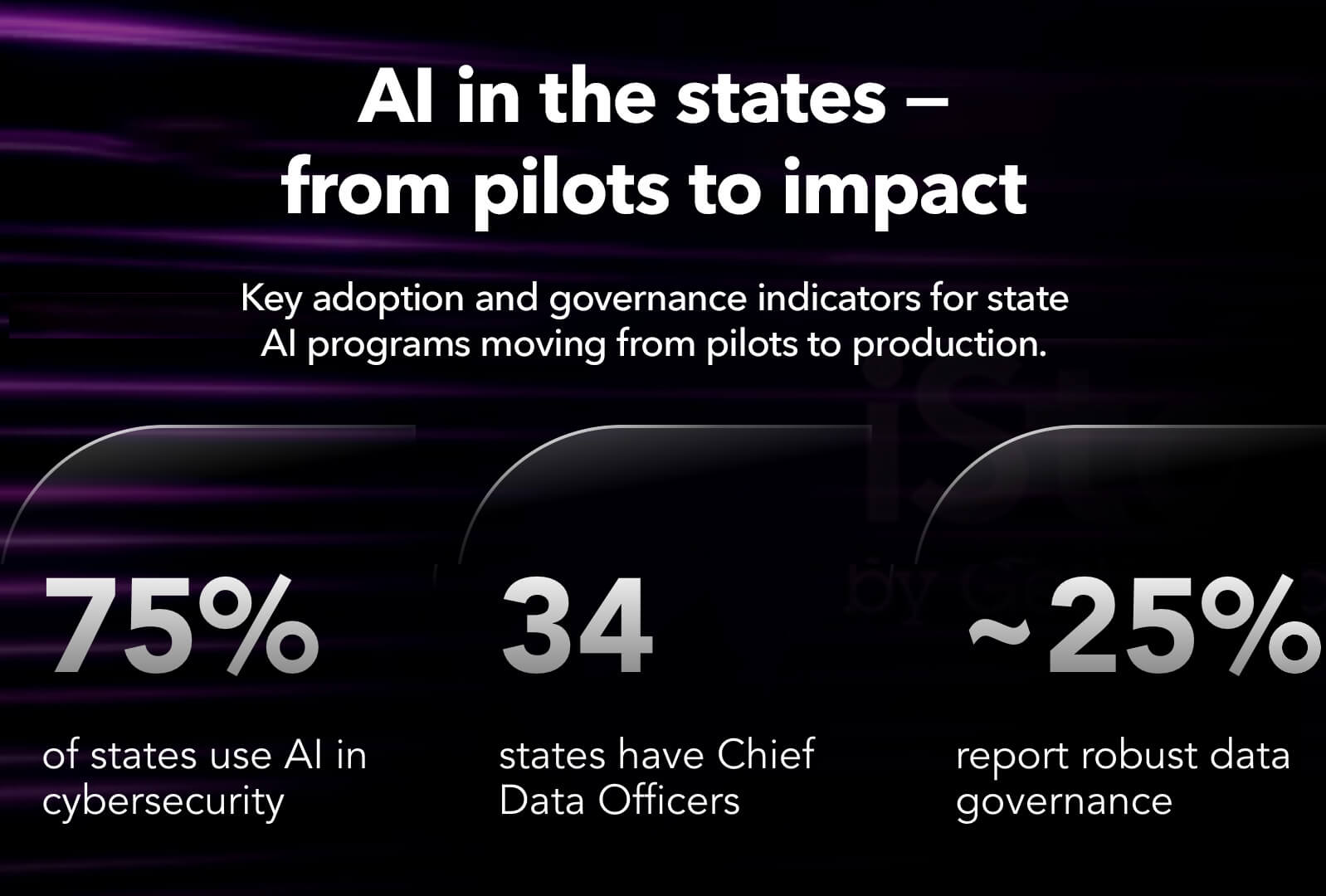State governments are transitioning from experimental AI pilots to operational deployments that deliver measurable improvements in public service delivery.
Our Chief Technology Officer, Mike Raker, joined Doug Robinson, Executive Director of the National Association of State Chief Information Officers (NASCIO), and Will Clark from the National Conference of State Legislatures (NCSL) in a recent panel discussion that revealed both the promising applications already showing results and the governance challenges that must be addressed for successful scaling. The panel was moderated by Senator Louis DePalma of Rhode Island.
Here are five takeaways from their insightful conversation.
1. From crisis response to strategic implementation
The rapid adoption of AI-powered tools during the COVID-19 pandemic demonstrated both the potential and the necessity of strategic AI deployment in government. According to Doug Robinson of NASCIO, chatbot usage exemplified this acceleration: "In 2019, we found very little use of chatbots in state government. A year later, with COVID, we went from almost none to 36 states deploying them."
This crisis-driven adoption has evolved into more sophisticated applications. Today's AI-enhanced chatbots and virtual assistants offer higher containment rates and faster resolution times, while new generative AI capabilities are expanding into areas like document analysis and content creation.
2. Applications showing measurable results
Customer service and interaction
The most mature AI applications in state government focus on public-facing services. Enhanced chatbots now handle complex inquiries with greater accuracy, while AI-powered virtual assistants guide customers through multi-agency processes that previously required multiple touchpoints and extended wait times.
